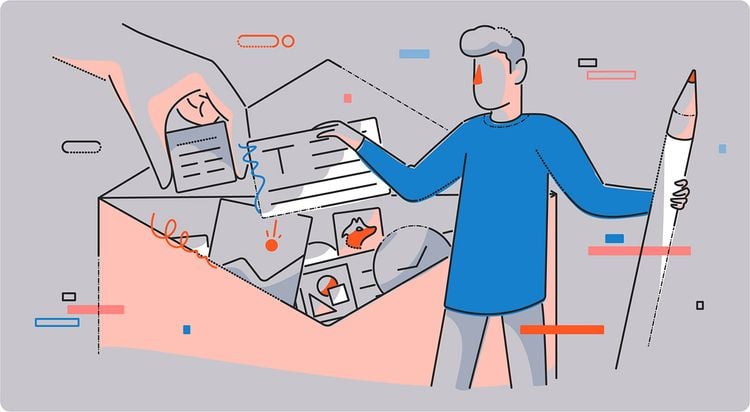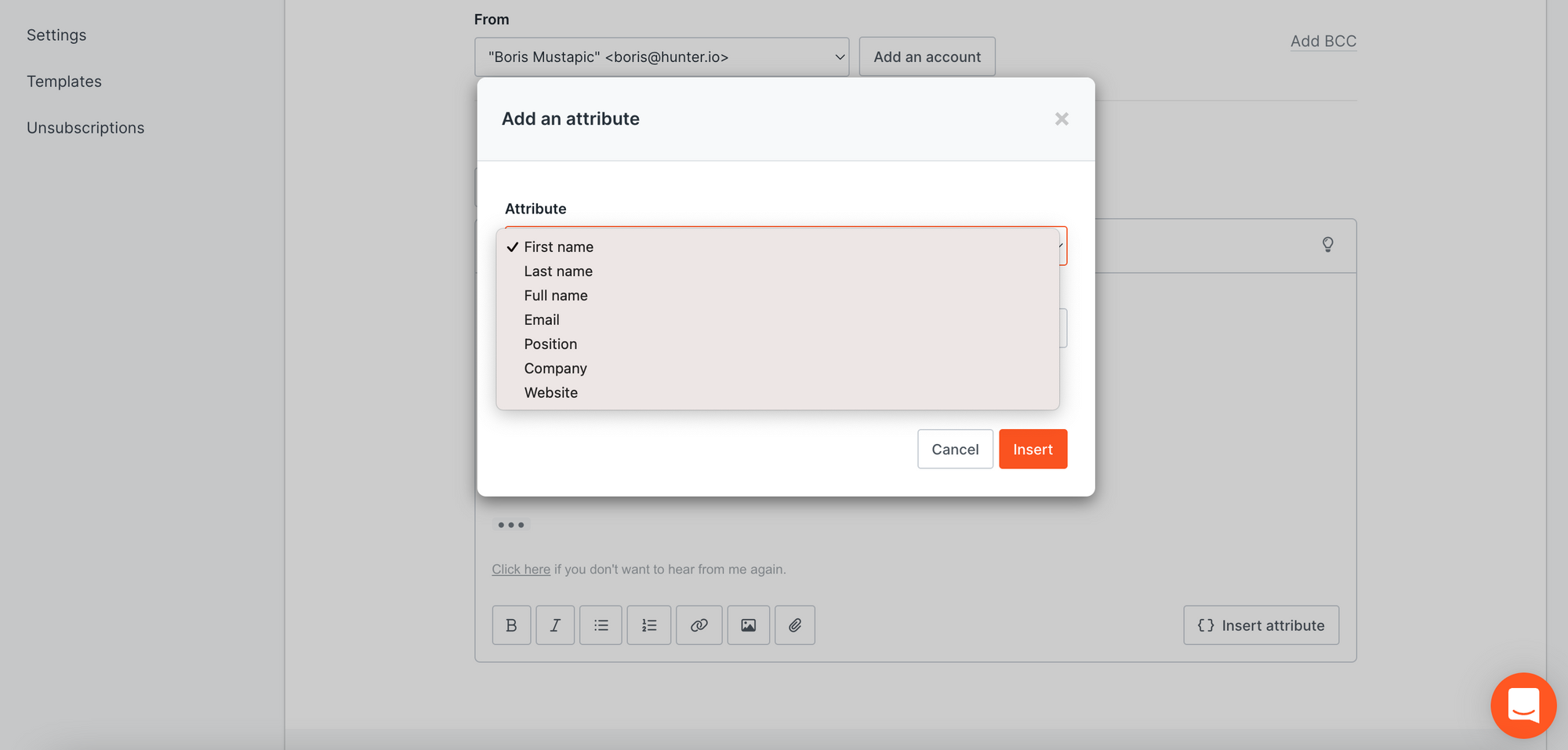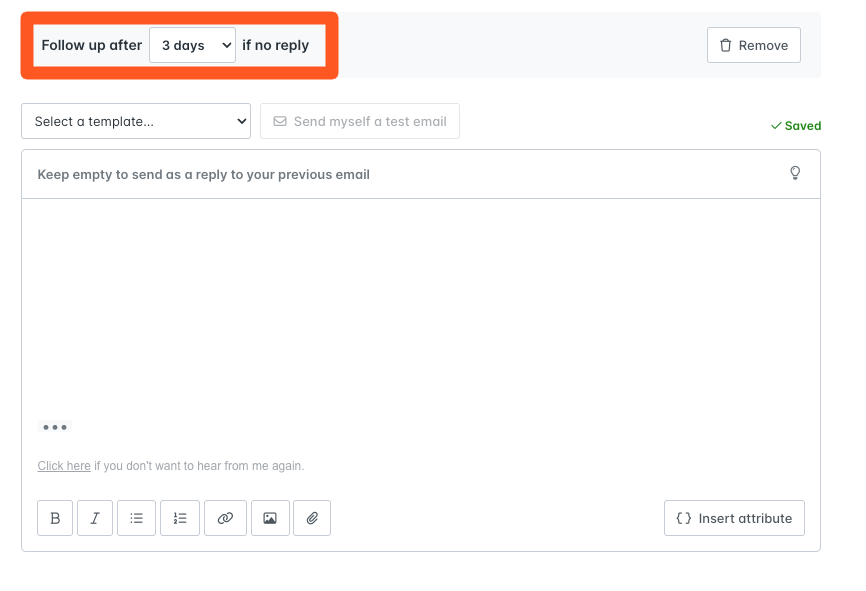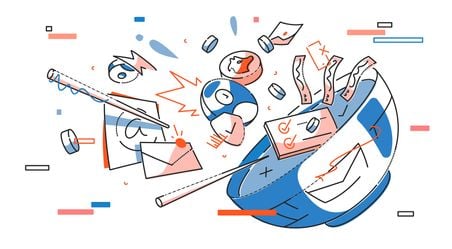How to Write an Effective BASHO Email

You have the perfect business prospect in mind. You have a top decision maker’s email address (or can guess it based on their name and the company’s email convention), and you’re willing to do the work to deeply understand their needs, pain points, and background.
But you’ve never talked to this person before. This is going to be cold outreach.
It sounds like you need an awesome BASHO email.
BASHO emails can be highly effective since they’re much more personal than the standard cold email. They’re a fantastic way to grab your prospect’s attention.
Let’s talk about how BASHO emails work.
What is a BASHO email?
A BASHO email is a highly personalized sales email that you send directly to decision makers. The goal of this type of cold email is usually to book a meeting or schedule a demo.
In most cases, you’d only send a BASHO email if you’re trying to reach a high-value prospect because there’s a lot of research involved.
Writing a series of BASHO emails can be an intense investment of time and labor. Rather than using a template for quick cold outreach, you take the time to personalize your message heavily for each recipient.
This can be difficult to execute for sales teams that thrive on a high volume, low response rate model.
If your accounts are moderate in value and you get a decent response rate with templated cold email outreach, you might not need to use BASHO emails.
For sales reps going after those big, competitive accounts, though, it’s a sales strategy well worth exploring.
Sending BASHO emails is a higher-touch version of cold email outreach, so it feels more one-to-one and helps you break through the noise when prospects receive a lot of messages that feel like spam.
Why is it called a BASHO email?
BASHO is actually a brand name. The technique was popularized by sales trainer Jeff Hoffman who worked under the BASHO brand, and that’s the name that stuck.
Why use a BASHO email?
Researching and crafting BASHO emails can be a lot of work, and it feels a little disheartening when all that time invested doesn’t get the prospect’s attention right away.
That’s the nature of sales, though. A lot of the messages from you and your sales team will be ignored. After all, only 8.5% of cold emails ever receive a response.
Well-crafted BASHO emails can get you better open rates and more replies, though.
Your highly personalized subject line tells your prospect right away that you did your homework, you care about their needs, and you’re ready to have a valuable conversation.
Follow up with a thoughtful, tailored email body, and you’re more likely to get a response.
For high-value accounts, that increased response rate is important. You’ll spend more time working on your cold email, but you’re likely to get a significantly higher response rate than you would with a generic cold email campaign.
That adds up to more conversations with important prospects and more meetings booked.
Which would you rather have: easier emails and fewer meetings, or more labor-intensive emails and a fully booked calendar?
Since it’s those appointments that translate into closed deals, we think it’s pretty obvious that BASHO emails make a lot of sense.
That’s not all, though. A good BASHO email can put you in touch with the decision-maker right away, giving you the best opportunity to connect on the right points and build a relationship.
Plus, you can use the BASHO technique for more than just sales. Looking for a great podcast guest? Want to publish a guest post on a popular blog? Try this technique to improve your results.
How to write a great BASHO email
Follow these steps to write an effective BASHO email.
1. Start with research
You already guessed the first step: it’s research.
Your goal is to find out as much valuable information as you can about your prospect. What does their day-to-day schedule look like? What are their most annoying pain points?
Think about both the company and the individual to whom you’ll be selling. Maybe the company cares deeply about increasing revenue in the next quarter to cover R&D goals, but your contact is personally concerned about preventing burnout in her team while they ramp up their goals.
LinkedIn is a great starting point. Check out what your prospect has posted and shared. Make a note of their comments on other people’s posts, too. That can give you hints about what they care about most and their hot-button issues.
Other social media sites may also be a valuable resource, but don’t get too lost in the weeds. The inspirational posts on their Instagram are probably not deep insights into their business needs, after all.
The company website and, if they have one, their personal website can also tell you a lot. What is prioritized right now? What’s being advertised heavily, and what takes some effort to find? Those things probably align with company priorities.
If you still don’t have a good understanding of your prospect’s priorities and pain points, decide whether it’s worth your time to continue digging. After all, you have a lot on your sales development to-do list.
Once you’ve done your research, use that information to create a highly personalized email.
If you need to find your prospect’s email address, you can do that by using Hunter’s Email Finder. Just enter the person’s name and website, and Email Finder will provide you with their email address in seconds.
2. Make sure the subject line grabs their attention
Using an effective subject line is crucial. Reading your email’s subject line is how your prospect will decide whether or not to open the email and read more, so think it through.
As a best practice, it’s a good idea to personalize the subject line. For example, you can include your prospect’s name. If you have a shared interest or mutual acquaintance, you can consider mentioning that, too.
Another good strategy is to try to immediately address the prospect’s pain points.
Based on your research, decide what you think will be the most compelling hook for that individual. Draft a few different versions of your email subject line and pick the one in which you’re most confident.
And then…
3. Hook them with your opening line
Get right to the point. If you tend to need some time to warm up, use this writing trick:
- Write your email in full stream of consciousness. Just write it all down.
- When you’re done, read through and look for the “AHA” moment.
- Highlight all the text before the “AHA” moment.
- Hit backspace.
Now, you’ve got right to the heart of the message. Start with the most interesting thing, and tie it in with a personalized message that proves you’ve done your research.
Remember that a little tasteful flattery can go a long way. If you notice a recent achievement, a brag, or even just a particularly insightful social post from the prospect, mention it in your email.
A good opening line makes the prospect want to read the rest of the email, where you…
4. Address the prospect’s pain points
The body of your email should show your prospect that you understand their problem and have the ability to solve it.
Keep this short and to the point. They already know what their problem is — you don’t have to explain it to them. The goal is to show that you understand and empathize, and that doesn’t take 1,000 words.
5. Mention a mutual connection
Making a connection with your prospect helps show that you’re a likable human, not an email automation robot. It’s a good first step to help you build some rapport and trust.
This can be a person you both know and like, a shared hobby or interest, or something else that links you together on a personal level.
For example, if you saw that they recently posted about a vacation to Sedona, and it’s one of your favorite hiking spots, ask them what they liked most and share some of your favorite trails.
It’s especially easy to ramble in this section, so follow the next tip closely.
6. Keep it short
Your prospect is likely already too busy to talk to a salesperson. Once you’ve gotten their attention, don’t turn them off by sending a two-page message.
In most cases, 4 or 5 sentences are plenty for a good BASHO email. It should take you about the same amount of time to write the email as you spent researching it.
Remember, it’s okay to leave important information for the follow-up. The goal of your email is to schedule the meeting, not to make the sale right away.
7. End with a call-to-action
All sales reps know about the all-important ask. At the end of your expertly crafted email, what are you going to ask your prospect to do?
Consider what you want them to do next. Should they reply to the email? Do you want them to schedule a call? Is there a process to book a live demo?
Think about what naturally comes next, both for their information gathering process and for your sales funnel. You don’t want to ask them to schedule a call with you using your Calendly link if it would be more natural for them to respond directly.
Wrap up your email with a clear call-to-action that makes it totally clear why you emailed them and what next step they should take.
Then, move on to your next BASHO email. Don’t sit around waiting for the response! You have business development to do.
8. Automate follow-ups
We’ve already mentioned that only 8.5% of cold emails receive a response. That’s why it’s important to send follow-up emails on your BASHO emails.
Keep in mind that it might take multiple follow-ups before you get a reply from the prospect.
There’s no reason to follow up manually when there are tools out there that can help you do it on autopilot.
Here’s how you can automate follow-ups using Hunter Campaigns:
Create a new campaign, add copy for your initial cold email, and then click the Add a follow-up button.

If you’d like to send your follow-up in the same thread as your initial email, leave the subject line field empty. Otherwise, enter a subject line for your follow-up email.
Then, fill out the email body section. If you need help writing a follow-up email, check out this guide.
Hunter Campaigns allows you to personalize your follow-up emails automatically. All you need to do is click the {} Insert attribute button and choose one or more built-in attributes to insert into your follow-up email.

You can also set a custom delay for your follow-up email sequence. The default is 3 days.

Repeat this process for every follow-up email in your sequence (up to three follow-ups).
Grab prospects’ attention with a BASHO email
Great BASHO emails are an effective strategy to help you break through the noise and grab some hard-to-get attention.
The more effort you put in, the better the results you’re likely to get — to a point. There’s a fine line between a well-researched email and a creepy message that tries way too hard.
Some people try combining templated messages with a BASHO approach, and that can work.
Keep in mind, though, that the most valuable prospects are probably getting other quasi-BASHO emails on a regular basis, and they begin to feel less personalized when every sales rep mentions the same things.
Give it a try! We think your response rates will be well worth the effort.
Looking to learn more about cold email outreach? Check out these guides:
- Cold Email Guide
- 8 Cold Email Tips to Improve Your Next Campaign
- 5 Cold Email Examples That Drove Millions of Dollars in Revenue



 Send cold emails with Hunter
Send cold emails with Hunter